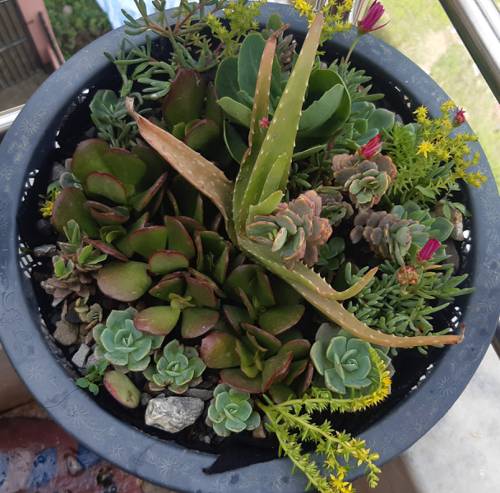
FAQ About Indoor Plant Ergonomics

What is indoor plant ergonomics?
Indoor plant ergonomics involves the strategic placement of plants within living spaces to optimize space usage, enhance aesthetics, and improve the wellbeing of occupants. It considers factors such as accessibility, light exposure, space efficiency, and safety to ensure that plants coexist harmoniously with other household items.

How can the placement of plants affect ergonomics in a home?
The placement of plants can significantly impact the ergonomics of a home. Proper placement enhances accessibility and visibility, prevents clutter, and reduces the risk of accidents. By positioning plants at appropriate heights and distances, ergonomic principles help in maintaining a clear and organized space.

What considerations should be made for plant placement to enhance ergonomics?
When placing plants for ergonomic purposes, consider the following:
- Height and Reachability: Ensure plants are easily reachable for care and maintenance.
- Lighting Needs: Position plants where they can receive adequate natural or artificial light.
- Space Efficiency: Avoid blocking pathways or creating overcrowded spaces.
- Safety: Prevent placing plants in areas that may cause tripping or are near electronic devices.

What are some ergonomic benefits of having indoor plants?
Indoor plants offer various ergonomic benefits such as improving air quality, reducing stress, and enhancing productivity. They create a natural barrier against noise, provide privacy, and add a refreshing visual element to the space. Moreover, their presence can lead to improved posture and mood.

How do you choose the right plants for an ergonomically-friendly indoor environment?
To choose plants for an ergonomic indoor environment, consider:
- Size and Growth Habit: Select plants that won't outgrow their designated space.
- Maintenance Needs: Opt for plants that match your care capabilities.
- Allergen Considerations: Choose plants that are less likely to trigger allergies.
- Light Requirements: Ensure they're compatible with the available light conditions.

Can indoor plant ergonomics contribute to productivity?
Yes, indoor plant ergonomics can contribute to productivity. Arranging plants to create a visually pleasing environment can reduce stress and enhance focus. Additionally, plants can improve air quality, which can lead to better cognitive function and less fatigue.

Are there specific plants recommended for ergonomic placements?
Certain plants are particularly suitable for ergonomic placements, including:
- Pothos: Known for their air-purification qualities.
- Snake Plant: Requires minimal care and is effective at improving air quality.
- Peace Lily: Ideal for low-light conditions and enhances indoor air.

How does plant ergonomics impact mental health?
Plant ergonomics positively impacts mental health by creating calming and aesthetically pleasing environments that reduce stress and anxiety. The presence of plants can also inspire creativity and contribute to an overall sense of well-being.

What are the challenges in implementing plant ergonomics indoors?
Challenges in implementing plant ergonomics include limited space, varying light conditions, and finding the right balance between aesthetic appeal and practicality. Additionally, maintaining plant health and avoiding interference with other household functionalities can be challenging.

How do you measure the success of indoor plant placement ergonomics?
Success in indoor plant placement ergonomics can be measured through improved space utilization, increased comfort and accessibility, enhanced aesthetic appeal, and a noticeable positive impact on the household’s air quality and occupants’ mood and productivity.

What role does lighting play in plant ergonomics?
Lighting is crucial in plant ergonomics as it directly affects plant health and growth. Proper lighting ensures that plants can photosynthesize efficiently, reducing maintenance needs and improving overall plant aesthetics and functionality within the space.

Should plants be considered in workspace ergonomics?
Yes, incorporating plants into workspace ergonomics can enhance the work environment by reducing stress, boosting mood, and increasing productivity. Strategically placed plants can also help manage sound levels and create a more pleasant visual setting.

What are some common misconceptions about indoor plant ergonomics?
A common misconception is that indoor plant ergonomics is solely about aesthetics. While aesthetics are important, ergonomic principles also focus on improving comfort, accessibility, and functional space utilization. Another misconception is that any plant can be placed anywhere; in reality, light, space, and care needs vary greatly.

Can indoor plant ergonomics improve air quality?
Yes, indoor plant ergonomics can significantly improve air quality. Certain plants, like snake plants and pothos, are known for their ability to filter toxins and increase oxygen levels, contributing to a healthier indoor environment.

How do you maintain plants placed for ergonomic purposes?
To maintain ergonomically placed plants, regularly check their water, light, and soil needs. Prune them to prevent overgrowth, and dust the leaves to maximize photosynthesis. It's essential to monitor for pests and diseases and adjust placements as needed to optimize care and appearance.

What furniture considerations should be made for indoor plant ergonomics?
When incorporating indoor plant ergonomics, furniture placement should allow sufficient space for plant growth and care. Avoid placing plants in high traffic areas where they might be knocked over, and use plant stands or shelves to adjust the height and integration with other furniture.

How can technology assist with indoor plant ergonomics?
Technology can aid indoor plant ergonomics through smart systems that automate watering, monitor light levels, and provide recommendations for plant care based on sensor data. Additionally, augmented reality apps can help visualize plant placement before actual changes are made.

What are the best practices for integrating indoor plants ergonomically in a small space?
In small spaces, utilize vertical space with hanging plants or wall-mounted planters. Choose compact, low-maintenance species and group plants to create a cohesive look. Ensure they don't block pathways and maintain easy access for maintenance to seamlessly blend with other elements.

How frequently should plants be rearranged to maintain ergonomic benefits?
Rearranging plants should occur as needed based on seasonal light changes, growth, and household modifications. Regularly assess if plants are thriving in their current locations, and adjust their positioning quarterly or biannually to maintain optimal ergonomic benefits.

Can plant ergonomics integrate with multi-use spaces?
Yes, plant ergonomics can effectively integrate with multi-use spaces by using plants as transitional elements or natural dividers that delineate areas without bulky furniture. Plants can enhance space flexibility and facilitate a fluid transition between areas dedicated to different activities.
